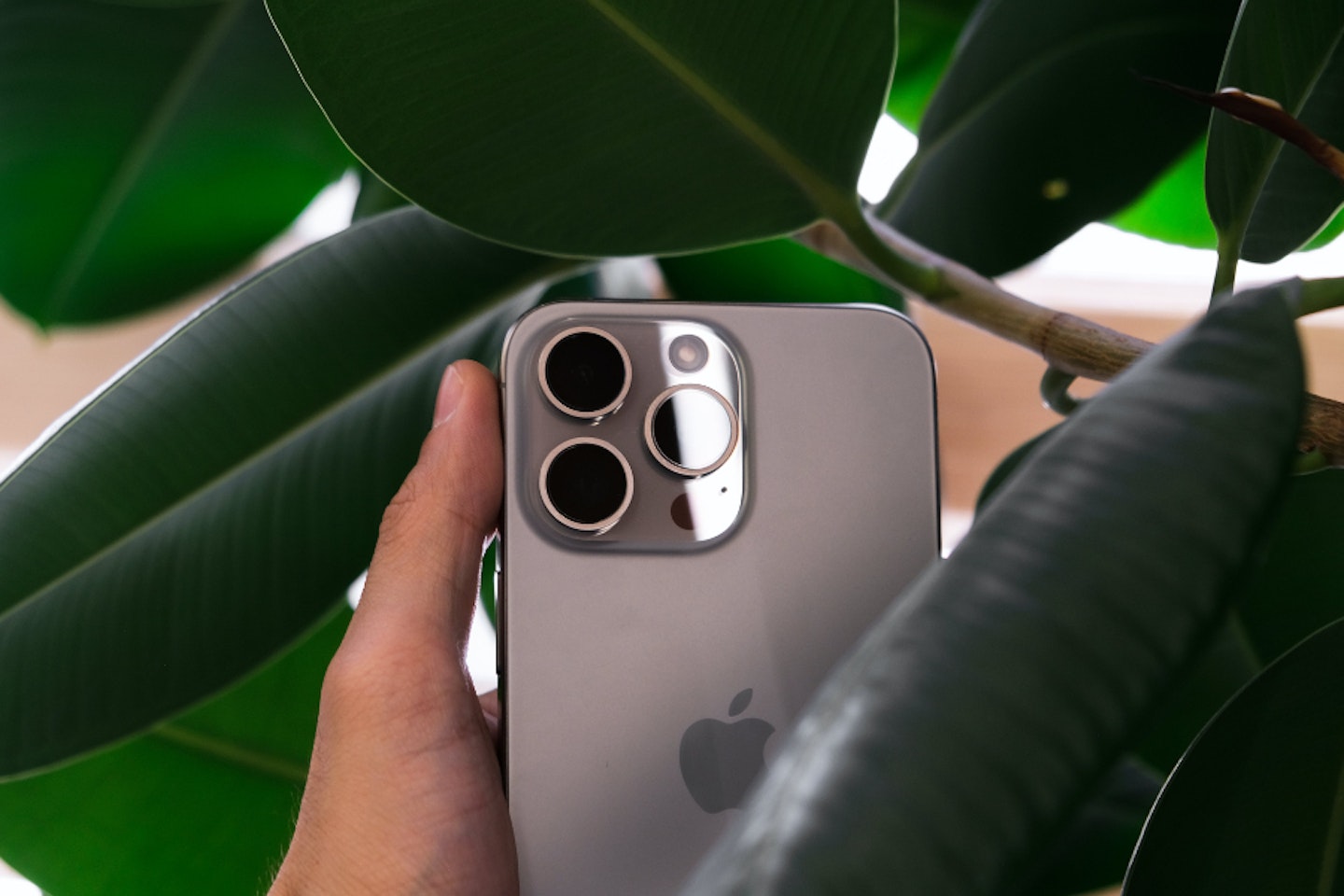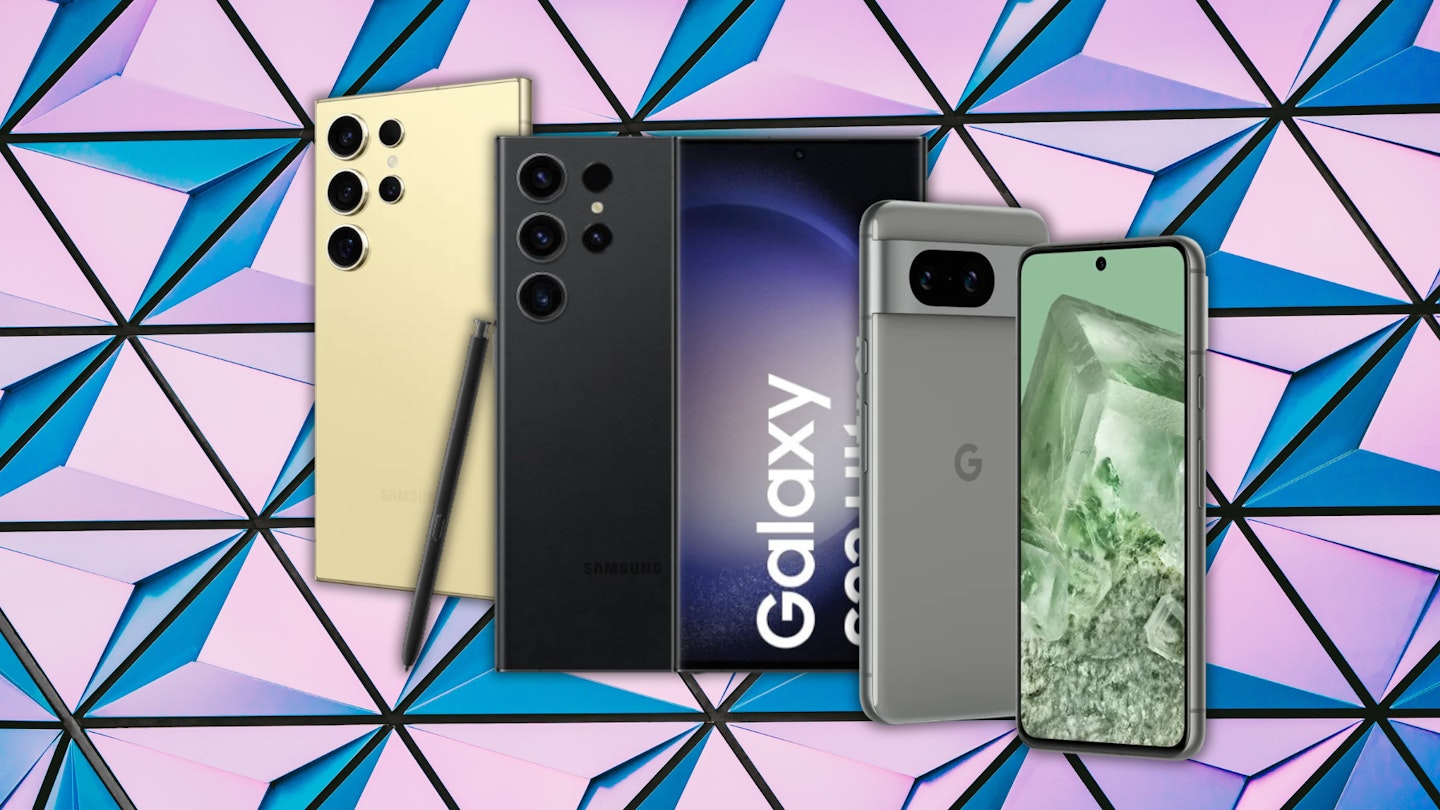The world of smartphone technology has been dominated for over a decade by two major competitors: Apple and Android. These two tech giants battle each year for the top spot of the best phone of the year, with many tech fans debating which is better. While many prefer the clean, integrated, and minimalistic look of Apple's phones, there's a rising tide of those who love a great Android phone, and there's no mystery as to why.
We'll be breaking down the big differences between these two technologies, determining what exactly it is that Android does right, and what's had users jumping ship for some time now.
Android hardware

Android phones come in all shapes and sizes, but when most think of Android smartphones they think of Samsung.
For many years, Android's monumental rise in the phone market has been carried by its powerful high-performance smartphones. These smartphones have always impressed with their sleek design and variety, with some coming in tablet-like sizes while others innovate with folding designs, like Samsung's Flip4, for example.
For iPhone users, a huge selling point of smartphones has been the superior build quality and ergonomic designs, which, for some time, Android phones couldn't compete with. The latest generation of Android smartphones, however, have closed the gap more than ever before.
Google's Pixel phones have brought AI-backed performance to the forefront of the smartphone market, delivering a powerful range of tools for users to completely customise images: removing objects, adding blur and camouflaging the background are all now possible at the touch of a button.
Meanwhile, Android phone brands such as Xiaomi, Honor and Nothing phones have delivered unprecedented performance power at competitive prices, giving mobile gamers a new lease on life.
Cameras:
Camera performance across Android phones has always been a little inconsistent: some budget phones have middling performance, whilst other top-tier Android smartphones have better camera performance than ever before.
Most recently, with the release of the Samsung S23 Ultra and soon-to-be-released S24 Ultra, Samsung has immeasurably stepped up its game with its truly exceptional 200MP triple camera, which is capable of up to 100x zoom, vastly outcompeting the 50MP main camera on the latest iPhone 15 Pro Max. With gorgeous natural photography, many modes, and editing tools, Samsung's S23 Ultra camera is a superb Android phone.
But it's not just Samsung phones with exceptional cameras; a vast range of phones for under £500, including Google phones, which are excellent for photography at a fraction of the cost of regular iPhones and significantly more worthwhile to own. Just read our Google Pixel 8 review to find out.
Great smartphone photography used to be reserved for only the most cutting-edge phones, yet we're gradually seeing some top phone photography contenders leaning more towards budget smartphones, which is an absolute success on Android's behalf.
Expandable memory:
For many iPhone users, the inevitable day shall come when your storage is full, your iCloud is bursting, and you have no choice but to delete your photos or move them elsewhere. Android users often don't face this issue since their storage is generally expandable. Boost your storage with an SD card; don't worry about losing memories again.
For Google smartphones, you also get access to Google Drive, where you can store hundreds of photos and videos for free - and they're all linked to your Gmail account for easy access.
User interface: why Android is better
Apple users, cover your ears. You might be shocked that many people prefer Android's user layout. And here's why - accessibility and convenience.
Apple phones look gorgeous, and with haptic vibrations linked with functions, the user interface feels fantastic, but there are certain nagging issues with the overall setup.
Confusing menus, a heavy reliance on Siri to get anything done, and the worst offender - no close all tabs option, even the best iPhone lacks some basic features that should be on any modern device. Therefore, iPhone's user interface can feel limited, with users having no real customisation options to be seen; this is where Android differs.
Add animated phone backgrounds, change your app icon styles, and use tools to develop Android apps. Android phones are far more user-friendly and allow users to tinker and delve into a world of features that is otherwise impossible on an iPhone.
There's undeniably a considerable amount more freedom for Android users who can completely redesign their smartphone should they want to, they're just that good.
Innovation: the cutting-edge of the smartphone market
When it comes to technological innovation, nothing really can compete with Android phones. Folding phones, tablets, and high-powered, low-cost models, there's a good variety of smartphones to pick from when you choose Android.
OnePlus's Open smartphone is another Android phone in a long line that has a gorgeous folding screen design, and the quality is unmatched. Stunningly designed, with incredible photography, Android phones are breaking the mould when it comes to hardware.
But it's not just hardware that's innovative; the amazing Google Pixel 8 smartphone has a seriously impressive array of AI-assisted photo and video editing tools, helping you hide unexpected faces and create the most breathtaking pictures imaginable.
Affordability
For those looking to buy the latest Samsung 24 Ultra, you're not looking at a cheap buy, and there's no denying it. There is, however, a huge wealth of phones under £300, almost all of which run on Android technology.
Brands such as Xiaomi, Oppo, Nokia, and even Samsung have phones for very low prices, which are worth getting your hands on for their great performance, solid cameras and high memory.
Compared to the best Apple phones, you haven't got a chance of grabbing a recent one for less than £500.
Are there any other reasons?
Aside from the main appeals of Android technology, there are also a few quality-of-life features that Androids have which make life easier.
Our first favourite is multi-tasking, the ability to open two tabs simultaneously on a phone. A feature you've likely used on your laptop, Android phones are capable multitaskers, which makes it incredibly easy to run a video in the background whilst messaging your friends and family on a separate tab - it's just that brilliant.
Perhaps the best quality-of-life feature, however, is the universal charger, which works with any USB-C. Since plenty of smart devices, headphones and even laptops have been switching to USB-C, you'll find that a dead phone isn't so much of a struggle; you'll have plenty of cables to pick from around the house. Apple iPhones have only recently jumped onto the USB-C bandwagon, and then that's only because it was told to by the EU.
And then, there's Google Play - which has a significantly better range of apps than Apple's App Store, so you'll get all the games you've been looking forward to playing for a good while.
What does Apple do better?

Apple's broad appeal comes from its iconography – when you buy an Apple product, you're guaranteed to get something of high quality. They're expensive – yes – but they're also premium technology, so you're getting the luxury of a well-crafted product for your day-to-day.
In terms of technology, a massive plus for the iPhone is its integration with adjacent Apple products, such as the Apple Watch and AirPods, which Android doesn't have in the same way.
Yes, Android brands such as Samsung have watches and earbuds, and a number of third-party options, but the level of integration between those products and Android smartphones themselves doesn't quite impress as much as with an Apple phone.
As for performance, however, most iPhones can't compete with the processing power of high-end flagship Android phones. If performance doesn't concern you, and you're just looking for a solid smartphone to handle your day-to-day socialising, some great phones under £200 are perfect for those less technologically inclined.
Ryan Houghton is a commercial content writer for What’s The Best, known best for his expertise in gaming, with a particular soft spot for PC gaming, audio tech, televisions and smartphones.
Diligently writing for What’s The Best for almost two years, there are very few tech products Ryan hasn’t had his hands on to review; televisions, headphones, folding phones and even LEGO, if it’s nerdy, he’ll be there.
His well-versed history as one of the resident techies at What’s The Best has kept him keen to uncover the very best deals, savings and offers for those in need of a cracking deal to upgrade their setup.
In his downtime, Ryan most likely has his nose buried in a fantasy book, or his eyes glued to a screen whilst playing a tough-as-nails Soulslike or leisurely RPG, indulging in most forms of escapism where possible.
Subscribe to the What’s The Best Newsletter to keep up to date with more of the latest reviews and recommendations from the rest of the What’s The Best team.
